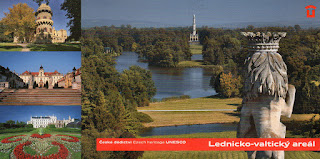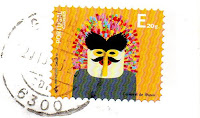I love gardens with statues and lakes. Joining to that the castles and surrounding buildings, this UNESCO site must be a dream!
 |
| Lednice-Valtice Cultural Landscape |
This postcard was sent by Ondrej
The Dukes of Liechtenstein transformed their properties into one large and designed private park between the 17th and 20th centuries. During the 19th century, the Dukes continued transforming the area as a large traditional English landscape park. The Baroque and Gothic Revival style architecture of their chateaux are married with smaller buildings and a landscape that was fashioned according to the English principles of landscape architecture.
In 1715 these two chateaux (castles) were connected by a landscape alée and road, later renamed for the poet Petr Bezruč. The Lednice Ponds (Lednické rybníky) are situated between the villages of Valtice, Lednice, and Hlohovec; as are the Mlýnský, Prostřední, Hlohovecký, and Nesyt Ponds. A substantial part of the cultural landscape complex is covered in pine forests, known as the "Pine−wood"(Boří les), and in areas adjacent to the River Dyje with riparian forests. - in: wikipedia


































